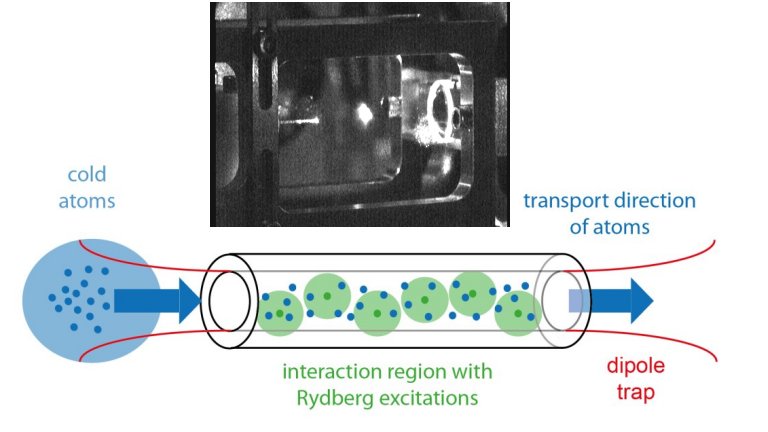Physicists had already managed to transport antimatter , but now they have achieved a feat that is a real milestone in science: They transported light.
It is clear that light can go anywhere at the maximum speed of the Universe , but here it is not a question of firing a pulse of light: Wei Li and his colleagues at the University of Mainz in Germany, stored the light in a quantum memory, transported it that memory for a distance of 1.2 millimeters and then captured again the pulse of light that had been stored there.
Light transport
They demonstrated that the controlled transport process and its dynamics have little impact on the properties of the stored light, allowing the data stored in it to be read.
To this end, the team used atoms of the ultra-cold rubidium 87 element as a storage medium for light, in order to achieve a high level of storage efficiency and a long life of the light pulses.
“So to speak, we store the light by placing it in a suitcase, only in our case the suitcase was made of a cloud of cold atoms. We move this suitcase a short distance and then remove the light again. That’s a lot interesting not only for physics in general, but also for quantum communication, because light is not very easy to ‘capture’, and if you want to transport it to another place in a controlled way, it usually ends up being lost, “explained Professor Patrick Windpassinger, team coordinator.
How to transport light
Using a technique known as electromagnetically induced transparency , incident light pulses can be captured and mapped coherently to create a collective excitation of atoms, which then function as a storage medium – a memory.
As the process is reversible, the light can be recovered again with high efficiency – in fact, this process has already been used to store light for up to 1 minute , but so far without moving it.
The team had recently developed a technique that allows sets of cold atoms to be transported on a kind of “mat” – a conveyor belt for light – created by two laser beams. The advantage of this method is that a relatively large number of atoms can be transported and positioned with a high degree of precision without significant loss of atoms and without the atoms being accidentally heated.
They have now managed to use this optical mat to transport atomic clouds that serve as a memory of light. The information initially stored in the light can be retrieved later at the destination.

Race track memory
The team then intends to optimize its experimental apparatus, in an attempt to develop a race track memory for light, with separate reading and writing sections – this type of memory, also known as racetrack , only for electrons, has been researched over a decade ago to replace hard drives.
If it works with light, a race track memory can not only be vastly faster, but also work directly with any quantum or photonic technology.
Controlled manipulation and storage of quantum information – as well as the ability to retrieve it – are essential prerequisites for communication using elementary particles and for performing operations on quantum computers .
In turn, optical quantum memories, which allow the storage and retrieval of information carried by light, are essential for scalable quantum communication networks – for example, these memories can constitute building blocks for quantum repeaters or tools in linear quantum computing .
Article: Controlled transport of stored light
Authors: Wei Li, Parvez Islam, Patrick Windpassinger
Magazine: Physical Review Letters
Vol .: 125, 150501, 8
DOI: 10.1103 / PhysRevLett.125.150501






























Discussion about this post